+Search query
-Structure paper
| Title | Structures of Native Doublet Microtubules from Trichomonas vaginalis Reveal Parasite-Specific Proteins. |
|---|---|
| Journal, issue, pages | Nat Commun, Vol. 16, Issue 1, Page 3996, Year 2025 |
| Publish date | Apr 29, 2025 |
 Authors Authors | Alexander Stevens / Saarang Kashyap / Ethan H Crofut / Shuqi E Wang / Katherine A Muratore / Patricia J Johnson / Z Hong Zhou /  |
| PubMed Abstract | Doublet microtubules (DMTs) are flagellar components required for the protist Trichomonas vaginalis (Tv) to swim through the human genitourinary tract to cause trichomoniasis, the most common non- ...Doublet microtubules (DMTs) are flagellar components required for the protist Trichomonas vaginalis (Tv) to swim through the human genitourinary tract to cause trichomoniasis, the most common non-viral sexually transmitted disease. Lack of structures of Tv's DMT (Tv-DMT) has prevented structure-guided drug design to manage Tv infection. Here, we determine the 16 nm, 32 nm, 48 nm and 96 nm-repeat structures of native Tv-DMT at resolution ranging from 3.4 to 4.4 Å by cryogenic electron microscopy (cryoEM) and built an atomic model for the entire Tv-DMT. These structures show that Tv-DMT is composed of 30 different proteins, including the α- and β-tubulin, 19 microtubule inner proteins (MIPs) and 9 microtubule outer proteins. While the A-tubule of Tv-DMT is simplistic compared to DMTs of other organisms, the B-tubule of Tv-DMT features parasite-specific proteins, such as TvFAP40 and TvFAP35. Notably, TvFAP40 and TvFAP35 form filaments near the inner and outer junctions, respectively, and interface with stabilizing MIPs. This atomic model of the Tv-DMT highlights diversity of eukaryotic motility machineries and provides a structural framework to inform rational design of therapeutics against trichomoniasis. |
 External links External links |  Nat Commun / Nat Commun /  PubMed:40301421 / PubMed:40301421 /  PubMed Central PubMed Central |
| Methods | EM (single particle) |
| Resolution | 3.19 - 4.7 Å |
| Structure data |  EMDB-46009: Doublet Microtubules from T. Vaginalis - local refine 12 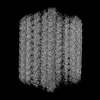 EMDB-46020: Doublet Microtubule from T. vaginalis - local refine 25  EMDB-46021: Doublet microtubules from T. vaginalis - local refine 26  EMDB-46023: Doublet Microtubule from T. vaginalis - local refine 27  EMDB-46024: Doublet microtubule from T. vaginalis - local refine 28  EMDB-46026: Doublet microtubule from T. vaginalis - local refine 30  EMDB-46028: Doublet microtubule from T. vaginalis - local refine 31  EMDB-46029: Doublet Microtubules from T. vaginalis - local refine 32  EMDB-46030: Doublet microtubule from T. vaginalis - local refine 33  EMDB-46031: Doublet microtubule from T. vaginalis - local refine 24  EMDB-46032: Doublet Microtubule from T. vaginalis - local refine 34  EMDB-46033: Doublet Microtubule from T. vaginalis - local refine 35  EMDB-46034: Doublet microtubules T. vaginalis local refine 20  EMDB-46035: Doublet Microtubules T. vaginalis - local refine 21  EMDB-46037: Doublet Microtubules from T. vaginalis - local refine 23  EMDB-46038: Doublet microtubules from T. vaginalis - local refine 22 EMDB-46580, PDB-9d5n:  EMDB-46633: Doublet Microtubules from T. vaginalis - local refine FAP40  EMDB-46634: Doublet Microtubules from T. vaginalis - local refine OJMOP1  EMDB-46635: Doublet microtubules from T. vaginalis - 96nm NDRC local refine  EMDB-46636: doublet microtubule from T. vaginalis - 96 nm repeat  EMDB-46642: Doublet microtubule from T. vaginalis - 16nm  EMDB-46643: Doublet Microtubules from T. vaginalis - 48 nm 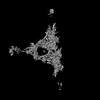 EMDB-48446: Radial spoke head from T. vaginalis |
| Chemicals | 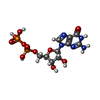 ChemComp-GDP: 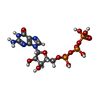 ChemComp-GTP:  ChemComp-MG: |
| Source |
|
 Keywords Keywords | STRUCTURAL PROTEIN / doublet microtubule / tubulin / flagella |
 Movie
Movie Controller
Controller Structure viewers
Structure viewers About Yorodumi Papers
About Yorodumi Papers




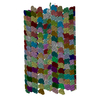
 trichomonas vaginalis g3 (eukaryote)
trichomonas vaginalis g3 (eukaryote)